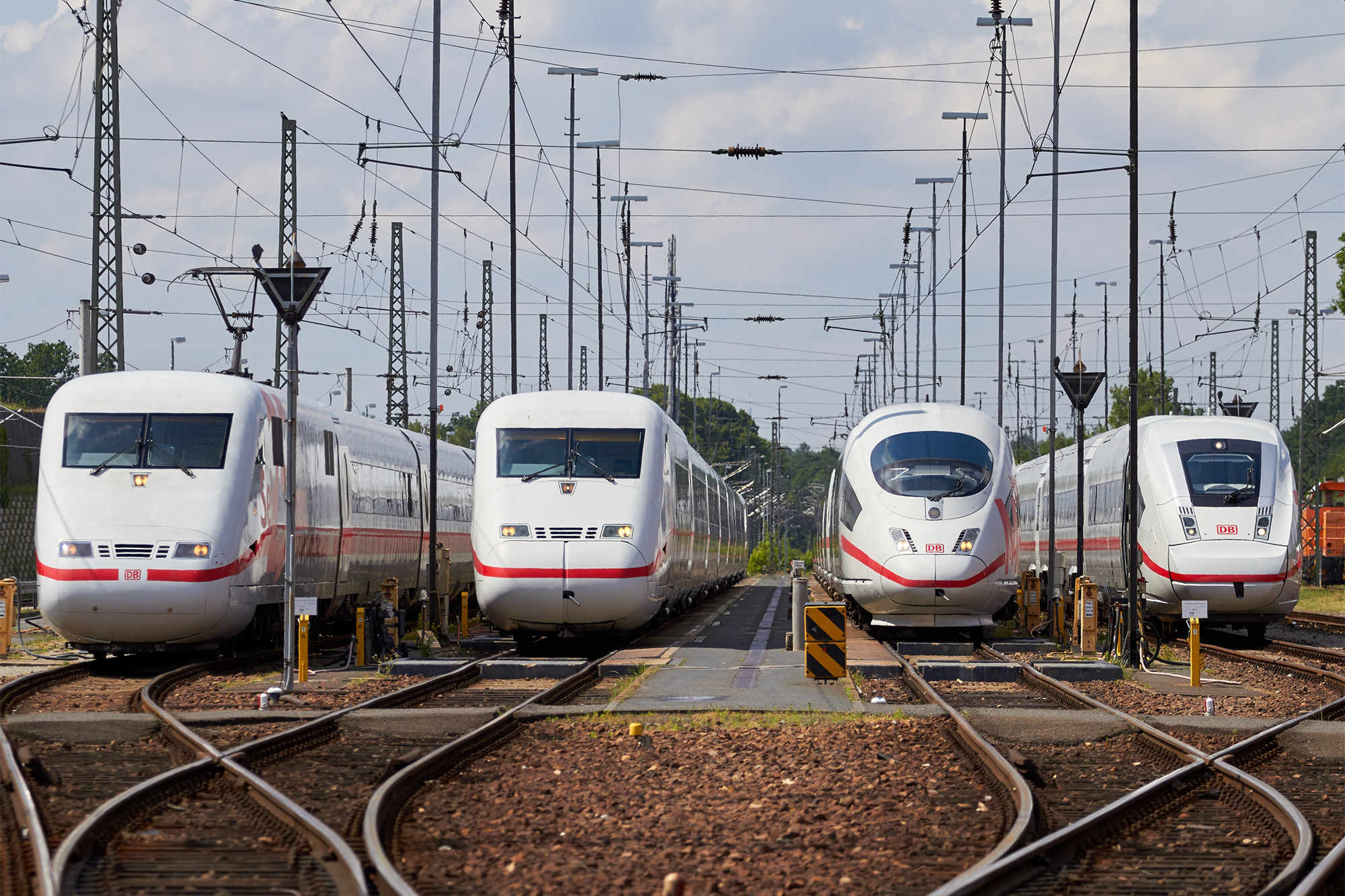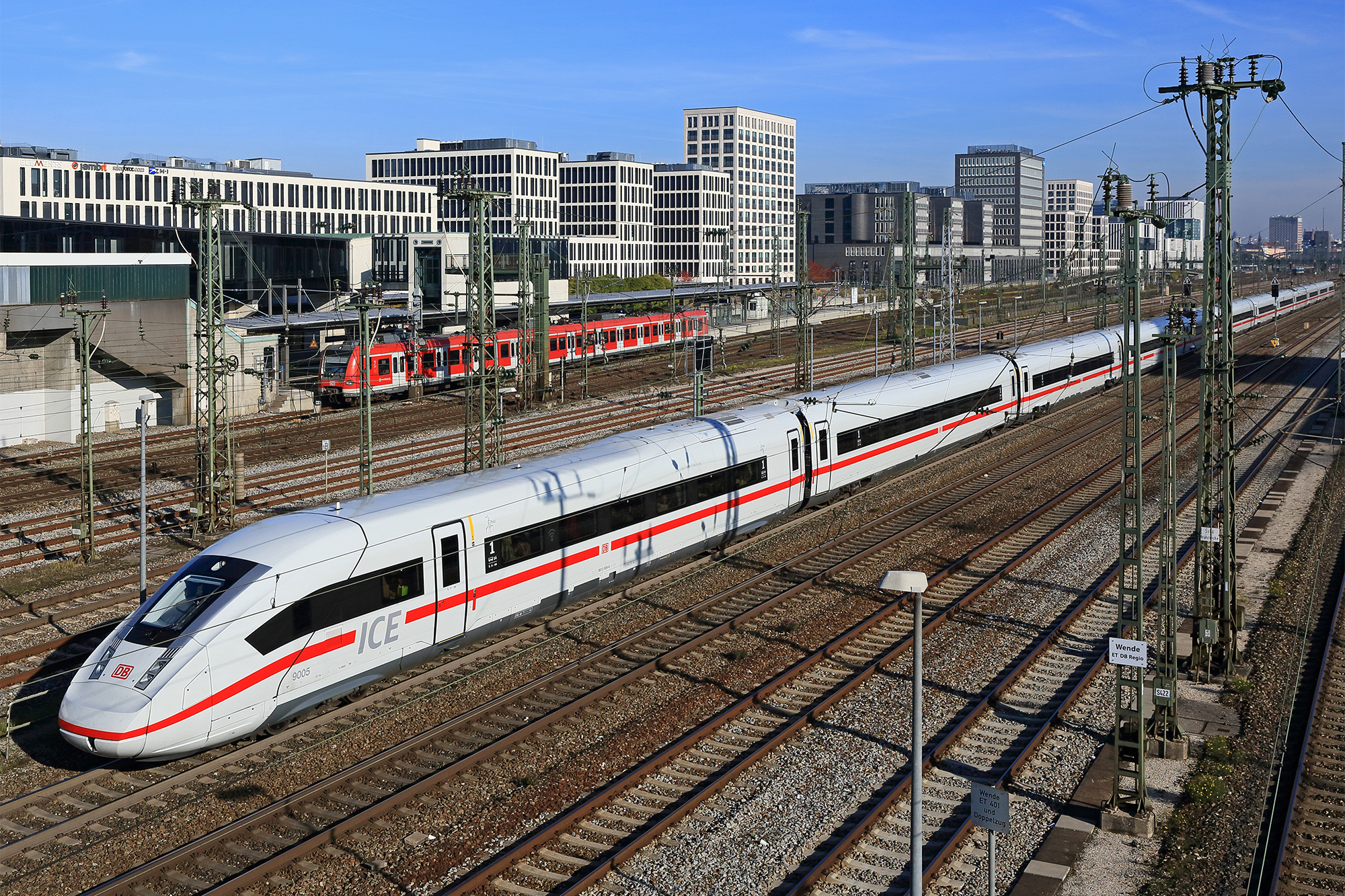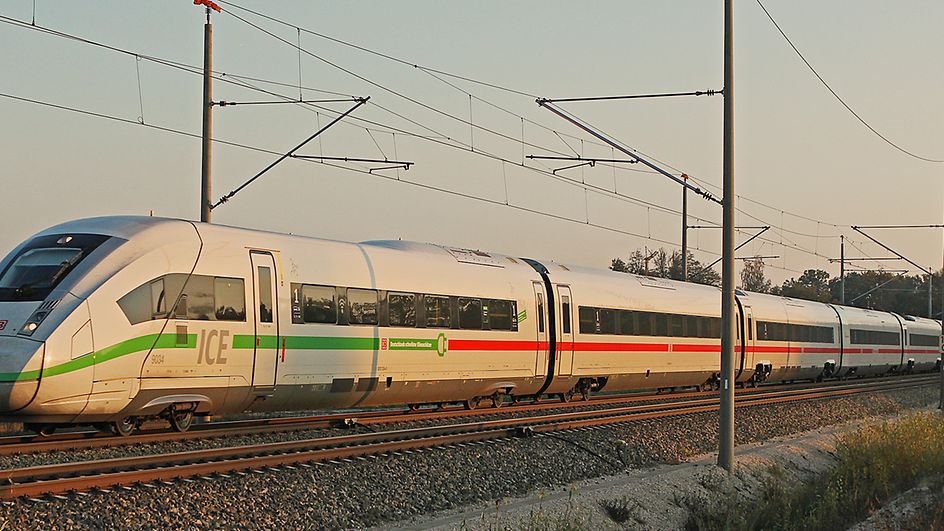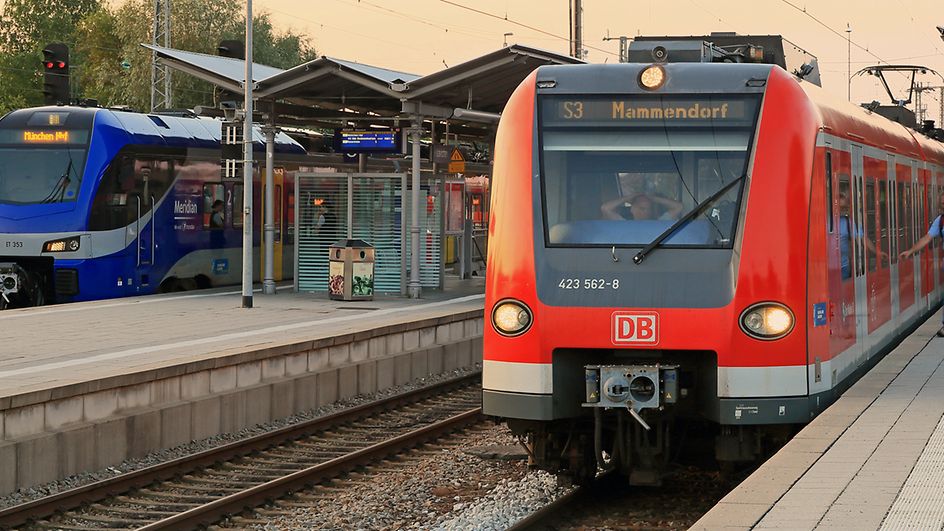Networked train
Article: Five examples of the smart use of IT on the ICE 4
02/2018 – The new ICE 4 is much more than just a train: it's a high-performance computer on wheels. Whether networking, entertainment or training: selective use of IT has made the high-tech train fit for the future.
Since the end of 2017, the ICE 4 has been conquering the Deutsche Bahn railway network. The state-of-the art ICE is the flagship of DB Fernverkehr AG, and in the coming years, 119 trains of its kind will form the backbone of the new generation of long distance transport. One thing is clear – introducing a new vehicle class that’s not integrated into the IT landscape is today inconceivable. In its role of digital partner, DB Systel plays a key part in implementing many of the technical features of the ICE 4. Here are five examples of where the use of state-of-the-art IT helped the ICE 4 become even smarter.
Secure updates thanks to authentication
The ICE 4 is equipped with cutting-edge technology. In fact, you could call it a computer on wheels – after all, its IT systems are fully interconnected. And as with every IT system, the software needs to be updated from time to time. For older classes, this is a time-consuming process, which technicians also like to call “old-school administration”. For example, to update the door control system, the employee has to go from door to door uploading the software every single time. In contrast, the ICE 4 is the first vehicle that’s different because it’s fully network based. This means the software can be uploaded centrally to the entire train from various different points. This even makes servicing easier as the condition of a certain toilet somewhere on the train, for example, can be checked from one location.
Yet, to ensure that not just anyone can transfer software updates in this way or change settings, access is regulated with temporary software certificates. This type of authentication can be compared to accessing a protected web page, for which a browser requires a certificate. The certificate contains an authorisation profile. This gives the train dedicated information, for example, that the relevant user is allowed to upload software to the train or change the door’s parameters. DB Systel has created a web solution for this purpose, which authenticates access to the system by assigning employees suitable client certificates based on their role profile. This solution is also used to manage the train’s server certificates, which provide information on which computers (clients) are allowed to connect.
Stay connected with the train-land communication
The trains are equipped with a platform that establishes a connection to the DB back office, enabling various types of information such as seat reservations, delays or diagnosis data to be exchanged. This mobile integration platform (MIP) connects the train to the stationary IT application landscape of DB. To do this, it relies on data communication based on mobile telephony, which is made possible by an antenna on the roof.
In the vehicle, the MIP has interfaces to the individual systems in order to send and receive information. On the ICE 4, the MIP is designed to incorporate future enhancements, whereas previously, a cable was generally needed to connect any new devices, and in some cases, hardware also had to be installed. Now the train is already networked. This enables other systems to be easily connected to the MIP. In turn, the train IT platform (ZIP) is implementing future-proof IT landscape on trains. The ZIP serves as a carrier platform for the ICE Portal.
Top-quality entertainment via the ICE Portal
Deutsche Bahn’s new free-of-charge ICE Portal is, of course, available on the ICE 4. This information and entertainment portal delivers a wide range of offerings aimed at passengers. Using their own end user devices, they can tap into the Wi-Fi on the train, for example, to read the daily news, watch the news report in 100 seconds, listen to audio books, enjoy a range of children’s entertainment or watch the latest feature films and series. Its appearance is identical to the offering available on the other classes. The ICE Portal has a uniform appearance everywhere, and aims to offer customers the same experience on whatever train they are travelling.
Foresight is everything: “green functions” for controlling train movements
The “green functions” are provided by DB Netz. This refers to information from the operations centres that is automatically distributed to the trains and ensures that timetables are optimised across all routes. For example, if a delay were to cause multiple trains arriving at a station to cross, the other trains are informed accordingly thanks to the “green functions”; this is accompanied by a speed recommendation so that they can continue their journey without stopping. This ensures greater efficiency on the line and conserves resources.
The EBuLa (electronic working timetable and speed restrictions) system is a driver assistance system. On the ICE 4, this system provides the “green functions” to receive the information from DB Netz and display it to the train driver accordingly. This enables energy-efficient driving and better on-time rates. And due to the fact that EBuLa on the ICE 4 is connected to the MIP, the train-land connection is established by means of the fast LTE radio standard.
Virtual classroom with learning in 3D
Engaging Virtual Education (EVE) is an internal startup of DB Systel that creates virtual 3D learning environments. EVE captures the natural movements and gestures of users and making functions literally tangible. This enables learning to be intensified considerably – particularly with safety-critical training topics and other scenarios that cannot be taught on real trains and driving simulators.
The ICE 4 (BR 412 Simulation) learning application is designed to help drivers get to know the ICE 4 better and dig deeper into training content. Mobile 3D simulation supports parts of the training digitally and can be repeated at any time. The simulation behaves just like the real ICE 4 and also issues warnings in the event of critical alarms. The summer of 2017 saw the addition of new exercises. For example, the train driver is shown how to perform a turning manoeuvre. Furthermore, there were a range of amendments to regulations – changes stipulated by the Federal Railway Authority (EBA) – as well as modifications from the manufacturer Siemens. Regular updates will ensure that the learning application is always up to date in the future.
An EVE learning application is also used for on-board service in long distance transport. This is scheduled to be integrated into the training offering in 2018 to provide training for the 4000 or so train attendants. An EVE learning application for the ICE roof garden was developed in collaboration with DB Training for rail vehicle engineers, electronics engineers and vehicle inspectors. The train includes a pantograph alongside a whole range of technical components such as the main circuit breaker, cables and voltage transformer. This structure is called a roof garden. EVE offers a virtual learning environment to show technicians which actions are needed for inspection, servicing or repairs, without actually climbing onto the train’s roof.
Serving the cause
The multitude of innovative solutions shows that, particularly with a project such as ICE 4, DB Systel can contribute significant technological expertise as an IT integrator to make the high-tech train even smarter. This starts with setting up the IT infrastructure and server technology, takes in the development of security concepts and forward-thinking learning applications, and goes right through to developing custom system solutions or selecting existing technology on the market.




